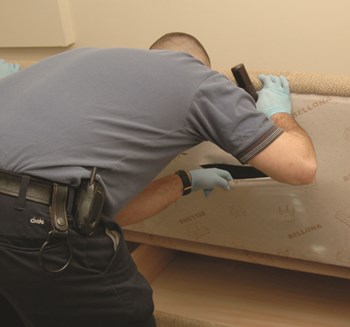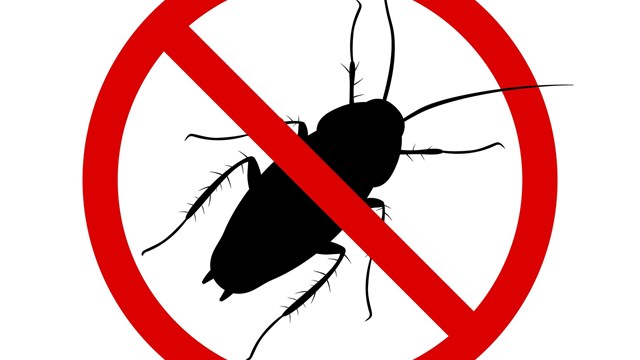
A few decades ago, the only talk of bed bugs was when moms were tucking in their kids and telling them to sleep tight.Entomologists had no reason to study them and bedbug complaints to pest control companies were unheard of. During the 1940’s, the potent pesticide DDT had largely eradicated them. After DDT was banned, bed bugs made a strong comeback. New Jersey, with its dense population and close proximity to New York City, has been particularly hard hit with the resurgence of these insects.
Bed bugs are parasitic insects that feed exclusively on the blood of warm-blooded animals, preferably humans. Bed bugs locate us by our warmth and the carbon dioxide in our breath. After a bedbug pierces the skin, a raised bump will appear, often accompanied by intense itching because of an allergic reaction caused by the proteins in the bedbug’s saliva.
Because of their size (an adult is about the size of a flattened apple seed), they are able to hide in cracks the width of a playing card.Their flat elongated bodies can even fit in the stitching holes of a mattress. The first indication of an infestation is usually bites on the host. Thereafter, the telltale bedbug signs are discovered—red spots on the sheets from blood-engorged bugs crushed during the night as well as light brown or black fecal spots. Bed bugs are often not discovered until their population has grown into the hundreds or even thousands.Changlu Wang, an entomology researcher at Rutgers specializing in bedbug eradication, once found 1,300 bugs in a single trap in an apartment in Bayonne.
While many bed bugs hide in a mattress, some may also hide in a sofa or chair or behind wall paper or pictures. They have even been found in computers, cell phones and televisions. Every corner or crevice needs to be searched. As you might guess, simply getting rid of an infected mattress will not solve the problem.
Bed bug bites often cause redness and possibly some swelling. Antihistamines and corticosteroids may be given to help relieve the itching. Approximately 50% of people do not show any evidence of bed bug bites.
The little blood suckers are about 3/8" long and are visible to the naked eye. Amazingly, they are able to go a long time without any food if necessary—possibly as long as a year. When they are gorged with blood, the females will lay eggs—typically from around 1 to 5 a day.
Scientists and pest control professionals agree that bed bugs are very tough to get rid of. People often waste time and money trying to deal with these infestations on their own, and their efforts are counter-productive as the bedbug population continues to increase and disperses throughout the home. The only successful resolution to bedbug infestation is a multi-tactic approach coordinated by a licensed, professional pest control service. Otherwise, short of abandoning your possessions and moving to another location you won’t get rid of them. And even then, there's no guarantee that a few won’t move with you.
Prevention and early detection are the most important steps in protecting yourself from a bedbug infestation. Always be on the lookout for possible infestations, especially if you live in an apartment or dormitory. If you are staying at a hotel, don’t assume it is bedbug-free; check the mattress and linens. When returning from a hotel visit, thoroughly inspect your luggage before bringing it into the house. Don’t be dismissive of insect bites. Periodically inspect your mattress. Most importantly, contact a professional pest control service immediately if you suspect that there is a potential bedbug problem. For bedbug infestations, every day left untreated is another day for these pests to become more entrenched in your home.
Bill Cowley is a partner in Cowley Pest Services, with his brother Drew. Headquartered in Neptune City, Cowley's now services all of Monmouth and Ocean counties and surrounding areas.






Leave a Comment